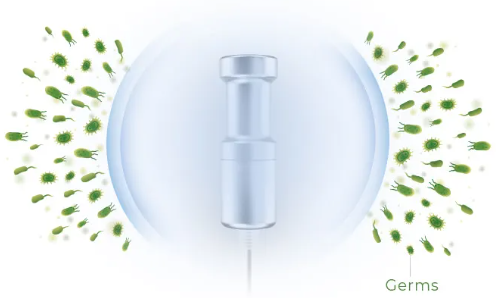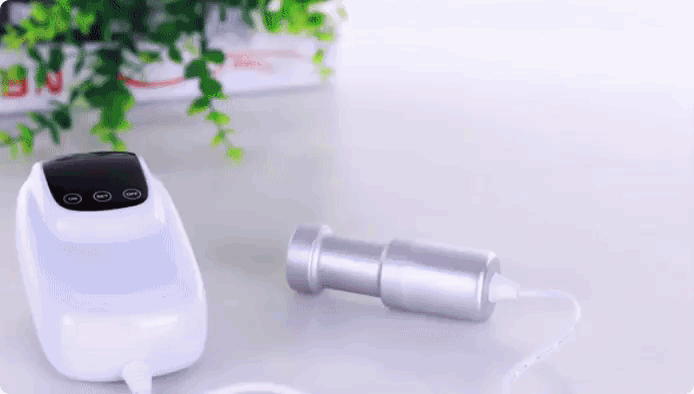
The Power of Automotive Parts Washer for Spotless Cleaning
Share
Automotive parts play a vital role in vehicles' smooth functioning and longevity. Over time, these parts accumulate dirt, grease, and contaminants, hindering their performance and compromising safety. To ensure optimal functioning, regular cleaning is essential.
Traditional cleaning methods often need to provide more efficient and thorough results. However, with the advent of advanced technologies, automotive parts washers, particularly ultrasonic cleaners like Sonic Soak, have revolutionized the cleaning process. In this article, we will explore the benefits and applications of automotive parts washers, focusing on ultrasonic cleaning machines, which have emerged as a highly effective solution for spotless cleaning.
What is Ultrasonic Cleaning?

Ultrasonic cleaning is a process that utilizes high-frequency sound waves to generate microscopic bubbles in a liquid cleaning solution. These bubbles implode upon contact with surfaces, creating an effect known as cavitation. This phenomenon produces intense cleaning action that reaches into the tiniest crevices and removes contaminants with exceptional precision.
How Does an Ultrasonic Cleaning Machine Work?
An ultrasonic automotive parts cleaner consists of a stainless steel tank filled with a cleaning solution. The tank also houses ultrasonic transducers that generate high-frequency sound waves.
When the cleaning cycle is initiated, the transducers emit ultrasonic waves into the solution, creating cavitation. The parts to be cleaned are submerged in the liquid, and microscopic bubbles remove dirt, grease, oil, and rust.
Benefits of Ultrasonic Automotive Parts Cleaner
Using an ultrasonic cleaner for car parts offers several benefits over traditional cleaning methods. Here are some key benefits:
1. Efficient Removal of Contaminants
One of the key advantages of automotive parts washers is their ability to remove contaminants from various parts efficiently. Whether engine components, brake parts, or transmission parts, these washers employ advanced cleaning techniques to eliminate dirt, grease, oil, and other residues. The washers' powerful cleaning solutions and mechanical action ensure the thorough removal of contaminants, leaving the parts ready for reassembly or further processing.
2. Enhanced Cleaning Effectiveness
Automotive parts washer is designed to deliver superior cleaning effectiveness, surpassing traditional cleaning methods. Combining high-pressure sprays, heated cleaning solutions, and specialized detergents ensures deep penetration and dissolution of tough grime and debris. The mechanical agitation within the washer further aids in dislodging stubborn contaminants, resulting in pristine parts that meet the highest cleanliness standards.
3. Time and Cost Efficiency
In the fast-paced automotive industry, time is a valuable resource. Automotive parts washers excel in saving time and increasing efficiency. By automating the cleaning process, these washers eliminate the need for manual labor and reduce cleaning time. Thus, minimizing the consumption of water, energy, and cleaning agents, resulting in cost savings.
4. Safety and Environmental Considerations
Automotive parts washers prioritize safety and environmental considerations. These machines are equipped with safety features such as automatic shut-off valves, door interlocks, and emergency stops, ensuring the well-being of operators.
Advanced filtration systems prevent contaminants from entering the environment, safeguarding against pollution. Many washers incorporate recycling systems that allow cleaning solutions to reuse, further minimizing waste and promoting sustainability.
5. Versatility and Adaptability
The versatility of automotive parts washers makes them suitable for various applications. Whether a small repair shop or a large manufacturing facility, these washers can accommodate different sizes and types of automotive parts.
Their adaptability extends to various cleaning requirements, as they can handle a variety of contaminants and adjust cleaning parameters accordingly. Some washers even offer customizable programs to meet specific cleaning needs, ensuring optimal results every time.
Applications of Ultrasonic Automotive Parts Cleaner

There are various applications of ultrasonic cleaners for automotive parts. Some of them are:
1. Engine Components
Ultrasonic cleaning is highly beneficial for engine components such as cylinder heads, pistons, valves, and crankshafts. The technology reaches deep into intricate passages, removing carbon deposits, oil residues, and other contaminants that can impact engine performance.
2. Fuel Injectors
Fuel injectors are critical in delivering the right fuel to the engine. Over time, they can become clogged with dirt and deposits, reducing fuel efficiency and engine performance. Ultrasonic cleaning effectively removes these obstructions, restoring the injectors' optimal functionality.
3. Brakes and Calipers
Clean brakes and calipers are essential for safe and reliable vehicle operation. Ultrasonic cleaning ensures that these components are thoroughly cleaned, removing brake dust, grease, and other contaminants that can impair braking performance.
4. Transmission Parts
Transmission components, such as gears and clutch plates, are highly stressed and require regular cleaning and maintenance. Ultrasonic cleaning provides a comprehensive solution by removing dirt, metal shavings, and other debris, helping extend these critical parts' lifespan.
Factors to Consider When Choosing an Ultrasonic Cleaner
When selecting an ultrasonic cleaner for your car parts, keep the following factors in mind:
1. Cleaning Capacity
Consider the size and quantity of car parts you will be cleaning. Choose the best ultrasonic cleaner with an appropriate tank capacity to accommodate the parts you intend to clean.
2. Frequency
The frequency of the ultrasonic waves affects the cleaning efficiency. Low frequencies (around 25 kHz) are suitable for heavy-duty cleaning, while higher frequencies (around 40 kHz) are better for delicate parts.
3. Power and Energy Output
Ensure the ultrasonic cleaner provides sufficient power and energy output to clean your car parts effectively. Higher power output generally results in better cleaning performance.
4. Tank Material

The tank material should be durable, corrosion-resistant, and capable of withstanding the cleaning solution and its temperature. Stainless steel tanks are commonly used for their durability and chemical resistance.
5. Cleaning Solution Compatibility
Check if the ultrasonic cleaning machine is compatible with the cleaning solutions you intend to use. Certain cleaners may have restrictions or requirements regarding the solutions they can effectively work with.
6. Timer and Controls
Consider the availability of the timer and control settings. These features allow you to set the cleaning duration and adjust other parameters based on your specific cleaning requirements.
7. Safety Features
Look for safety features such as automatic shut-off, overheating protection, and liquid-level sensors. These features ensure safe operation and prevent damage to the ultrasonic cleaner and the car parts.
8. Price Range
Set a budget and explore options within that range. Consider the long-term value and durability of the ultrasonic cleaner to make an informed decision.
Maintenance Tips for Ultrasonic Cleaner for Car Parts
To ensure the longevity and optimal performance of your ultrasonic cleaner for car parts, follow these maintenance tips:
- Regularly change the cleaning solution and filter out contaminants
- Clean the tank and transducers to remove any buildup or residue
- Inspect and replace worn-out parts as necessary
- Follow the manufacturer's guidelines for operation and maintenance
Final Thoughts
Ultrasonic automotive parts cleaners have revolutionized the cleaning process, offering an efficient and effective solution for achieving spotless results. Their ability to penetrate intricate components, gentle treatment of parts, time-saving benefits, and versatility make them invaluable in automotive maintenance. Investing in a high-quality ultrasonic cleaner ensures that your automotive parts remain in optimal condition, contributing to the vehicles' overall performance and longevity.
You may also like to read - Maximize Performance with Automotive Parts Cleaner
